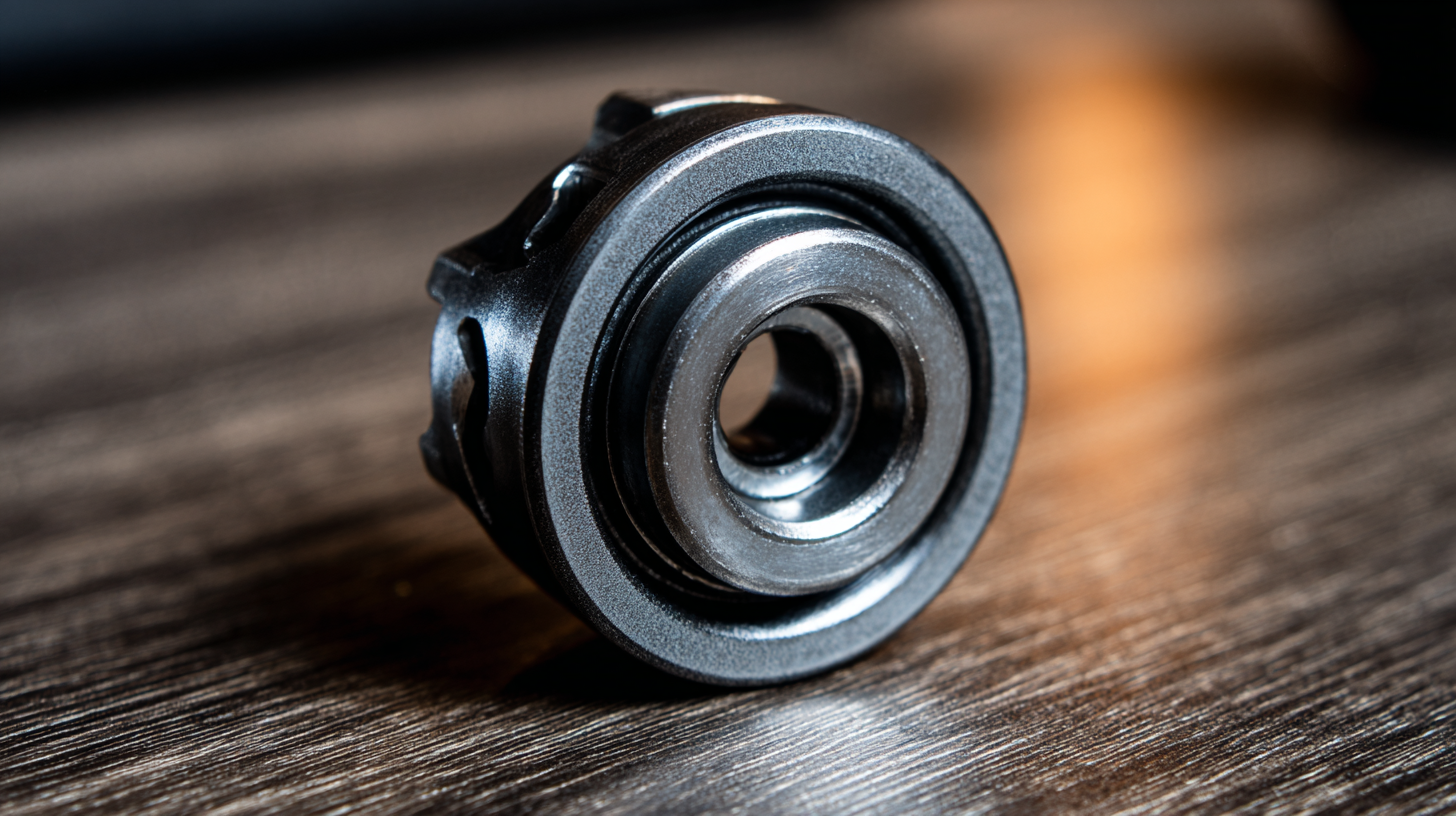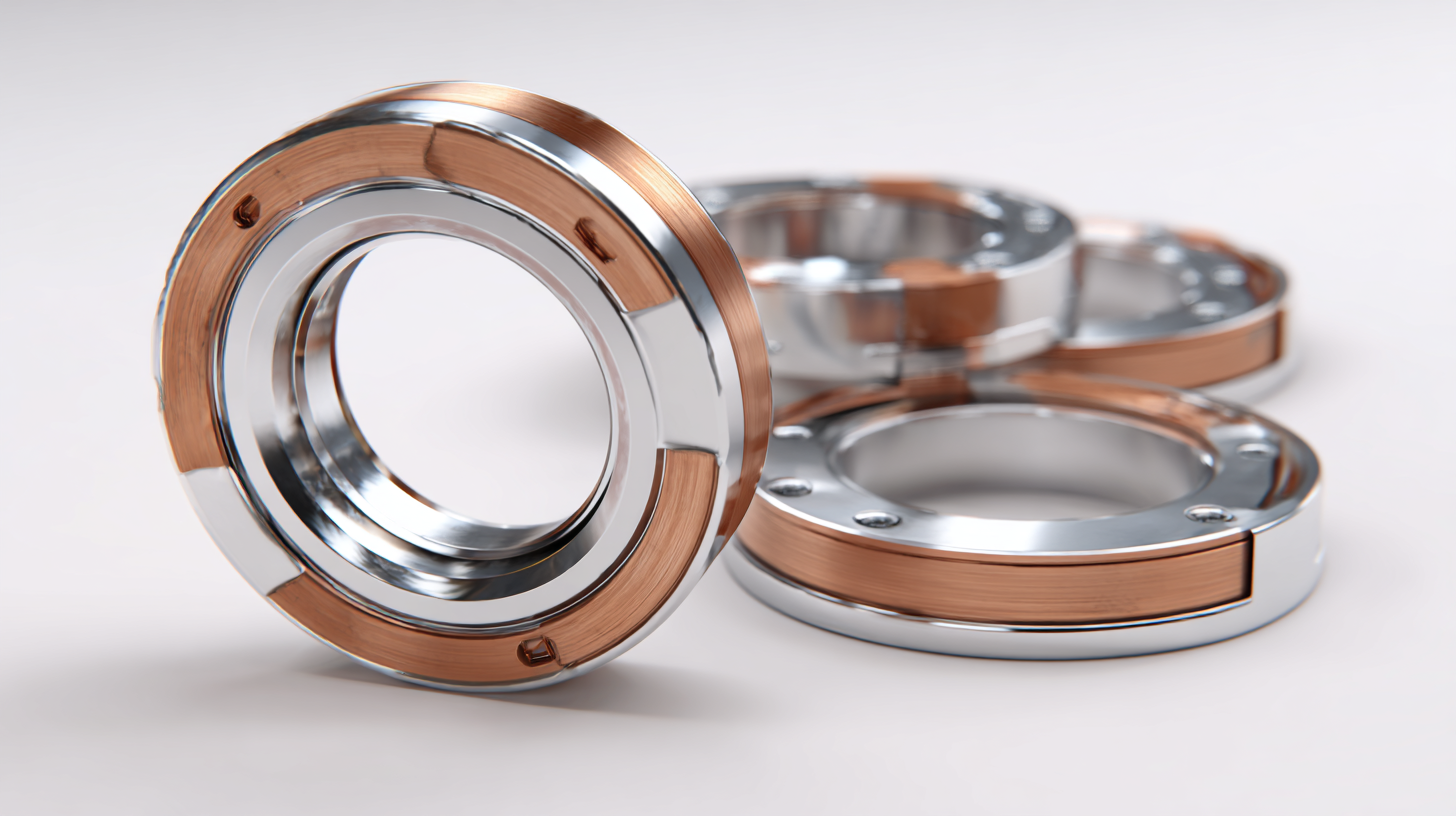Exploring the Top Alternatives to Best Thrust Bearings for Improved Performance
In the dynamic world of machinery and engineering, selecting the right components is crucial for optimizing performance and longevity. Thrust bearings, designed to withstand axial loads, are pivotal in various applications, including automotive, aerospace, and industrial machinery. According to a recent market research report by Technavio, the global thrust bearing market is expected to grow by over 2% annually through 2026, driven by the increasing demand for high-performance rotating equipment. However, despite their widespread use, traditional thrust bearings can present limitations regarding efficiency, wear resistance, and operational temperature ranges.

As engineers and designers seek innovative solutions to enhance machine performance, exploring alternatives to conventional thrust bearings has become essential. This blog will delve into the top alternatives that provide improved performance, reduced friction, and better adaptability to diverse working conditions, ensuring that industry professionals can make informed choices for their specific needs.
Understanding the Role of Thrust Bearings in Engineering Applications
 Thrust bearings play a pivotal role in engineering applications, particularly in scenarios where axial load handling is crucial. These specialized bearings are designed to support and transmit axial forces while minimizing friction and wear. In machinery such as turbines, automotive systems, and rotary equipment, the proper functioning of thrust bearings is essential for operational efficiency and longevity. Understanding their functionality can help engineers select the right alternatives when necessary.
Thrust bearings play a pivotal role in engineering applications, particularly in scenarios where axial load handling is crucial. These specialized bearings are designed to support and transmit axial forces while minimizing friction and wear. In machinery such as turbines, automotive systems, and rotary equipment, the proper functioning of thrust bearings is essential for operational efficiency and longevity. Understanding their functionality can help engineers select the right alternatives when necessary.
Tip: When considering alternatives, look for materials that can withstand extreme pressures and temperatures. Ceramic or composite thrust bearings, for instance, often provide enhanced performance in high-load environments, making them suitable substitutes for traditional metal bearings.
The effectiveness of thrust bearings can significantly impact the overall performance of machinery. Adapting to innovative designs like magnetic thrust bearings can offer advantages such as reduced friction and increased reliability. These alternatives utilize magnetic fields to support loads, which can be especially beneficial in applications requiring minimal maintenance.
Tip: Always consult with engineering professionals to assess compatibility and performance metrics when switching to alternative thrust bearings. This ensures that your machinery operates at peak efficiency while minimizing potential downtime.
Assessing Industry Standards for Thrust Bearing Performance and Selection
When selecting thrust bearings, understanding the industry standards is crucial for ensuring optimal performance. Thrust bearings are essential components in various applications, from automotive to aerospace, where they support axial loads and provide stability. The most commonly referenced standards include ISO, ASTM, and SAE, each offering guidelines on material selection, load ratings, and testing methods. Familiarizing yourself with these standards can greatly impact your bearing performance and longevity.
Tips: Always consider the specific application requirements when choosing a thrust bearing. Factors such as load capacity, operating speed, and environmental conditions play a vital role in determining the suitable bearing type. Additionally, consult the manufacturer's specifications and performance charts to ensure compatibility with your system.
It's also essential to regularly assess the condition of your thrust bearings, especially in high-load or high-speed applications. Implementing a maintenance schedule that includes lubrication checks and dimensional inspections can help prevent premature failure. Remember, investing time in understanding industry standards not only enhances performance but also prolongs the life of your machinery.
Key Performance Metrics for Evaluating Thrust Bearing Alternatives
When exploring alternatives to traditional thrust bearings, it's essential to evaluate specific performance metrics that can significantly impact machinery efficiency and longevity. Key performance indicators include load capacity, temperature tolerance, friction coefficient, and wear resistance. By assessing these characteristics, engineers can determine which alternatives will best suit their operational requirements, ensuring optimal performance and minimal downtime.
Tip: Always consider the specific environment in which the thrust bearings will operate. For instance, if high temperatures are expected, look for materials that can withstand thermal stresses without degrading. This not only enhances performance but also extends the service life of the bearings.
Another crucial metric to evaluate is the lubrication requirements of alternate thrust bearings. Some materials may require more frequent maintenance, while others can be self-lubricating or use less lubricant overall. Choosing a low-maintenance option can lead to significant cost savings in the long run.
Tip: Conduct thorough testing to observe how different thrust bearing alternatives perform under real-life conditions. This hands-on approach can reveal performance aspects not immediately apparent from specifications alone, ensuring a well-informed choice.
Innovative Materials in Thrust Bearing Design for Enhanced Durability
In the ever-evolving world of engineering, thrust bearings play a crucial role in supporting axial loads and ensuring smoother operation in various machinery. As technology advances, so does the exploration of innovative materials in thrust bearing design, which significantly enhance their durability. Traditional bearings often succumb to wear and tear due to friction and load stress, calling for more resilient materials that can withstand these challenges.
One alternative gaining traction is the use of polymer-based materials, which offer excellent wear resistance and lower friction coefficients compared to conventional metal bearings. These polymers, reinforced with fibers or other additives, can effectively distribute loads and minimize thermal expansion. Furthermore, ceramic materials are being incorporated into thrust bearing designs. Their inherent hardness and resistance to corrosion make them ideal for high-performance applications where traditional materials might falter under pressure.
Moreover, hybrid bearings, which combine the strengths of both metal and non-metal components, are becoming a popular choice in various industries. This approach not only enhances load-bearing capacity but also improves operational efficiency by reducing maintenance needs. As manufacturers continue to experiment with these innovative materials, the future of thrust bearing design looks promising, paving the way for increased performance and reliability in critical machinery.
Exploring the Top Alternatives to Best Thrust Bearings for Improved Performance
| Thrust Bearing Type |
Material |
Load Capacity (kN) |
Temperature Range (°C) |
Durability Rating (Cycles) |
| Angular Contact Ball Bearing |
Ceramic |
50 |
-40 to 150 |
100,000 |
| Thrust Needle Roller Bearing |
Steel |
45 |
-30 to 120 |
50,000 |
| Thrust Roller Bearing |
Plastic |
60 |
-20 to 80 |
30,000 |
| Sleeve Bearing |
Bronze |
75 |
-50 to 200 |
150,000 |
| Magnetic Bearing |
Magnetic Material |
120 |
-30 to 300 |
Unlimited |
Best Practices for Implementing Thrust Bearing Alternatives in Machinery
When considering alternatives to traditional thrust bearings in machinery, understanding the best practices for implementation is crucial to optimizing performance. Advanced technologies, including generative design based on machine learning, play a pivotal role in refining the surface textures that enhance the operational capabilities of these alternatives. Recent reports indicate that innovations in surface texturing can lead to a significant reduction in friction and wear, resulting in improved efficiency and longevity of machinery components.
Incorporating thrust bearing alternatives involves meticulous planning and execution. Experts emphasize the importance of selecting materials that not only match the operational demands but also complement the overall design of the machinery. For example, using composite materials or specialized coatings can significantly enhance load-bearing capacity and reduce maintenance needs. It's found that machinery employing these advanced alternatives have demonstrated up to a 30% increase in performance metrics when compared to conventional bearings. By embedding cutting-edge technologies and best practices, industries can not only replace outdated components but also leverage new opportunities for efficiency and productivity.